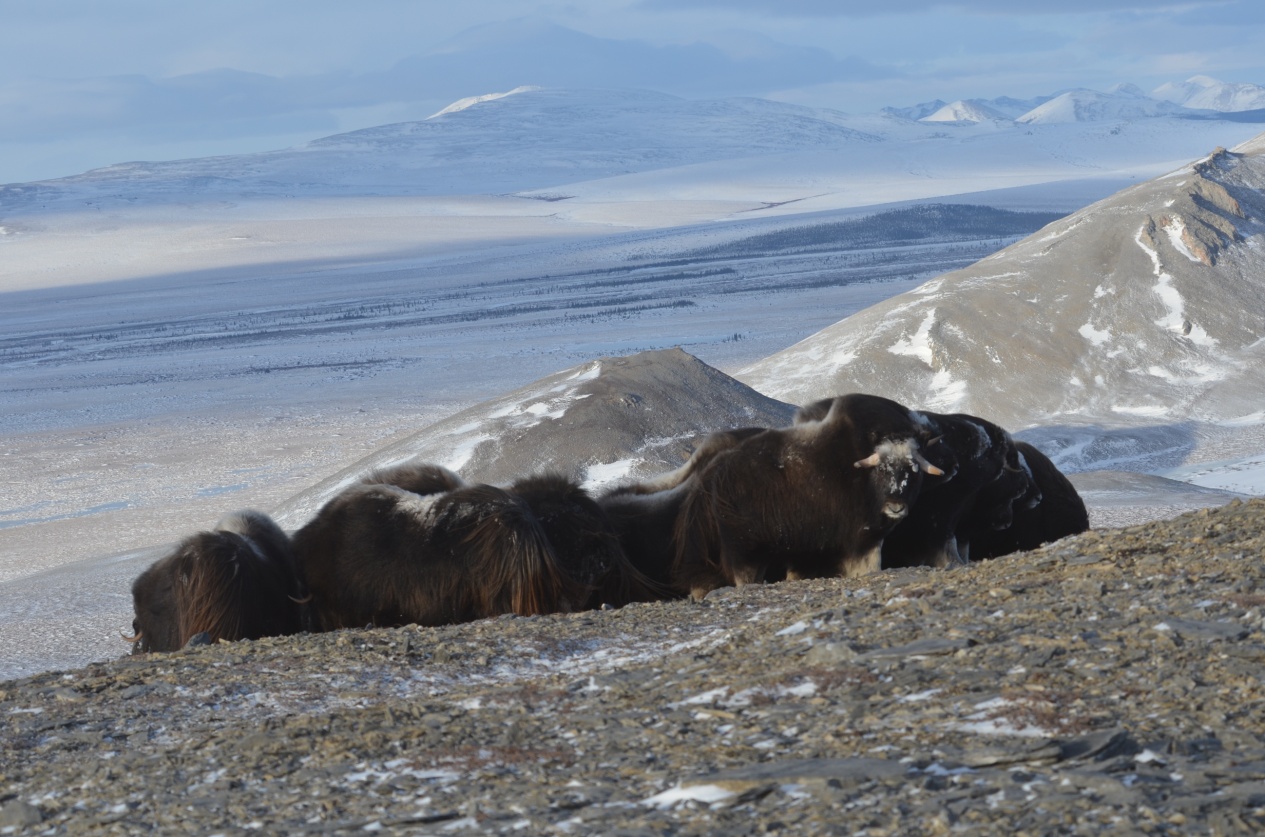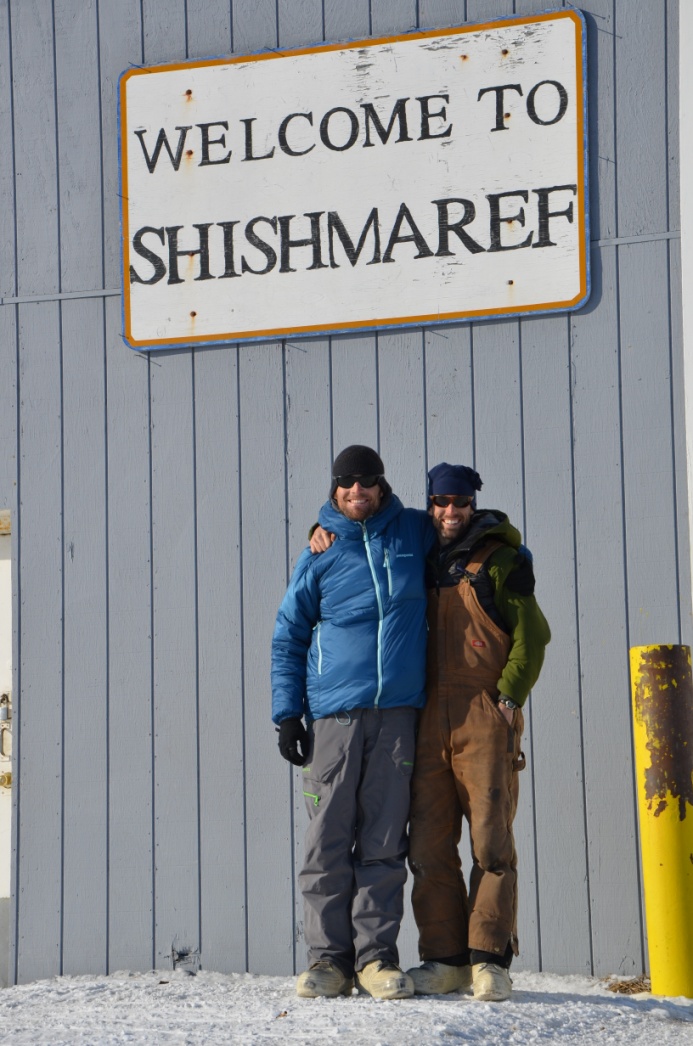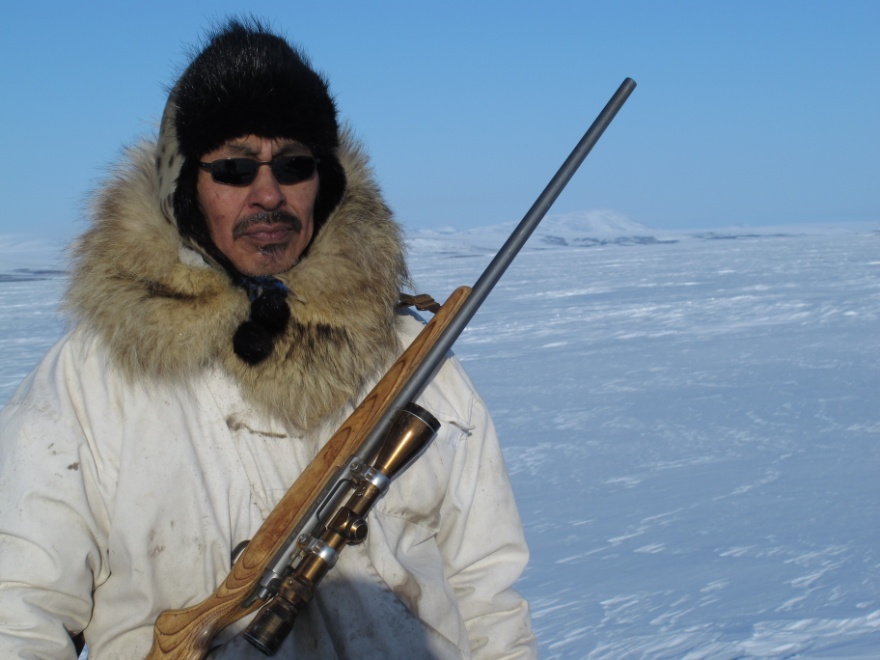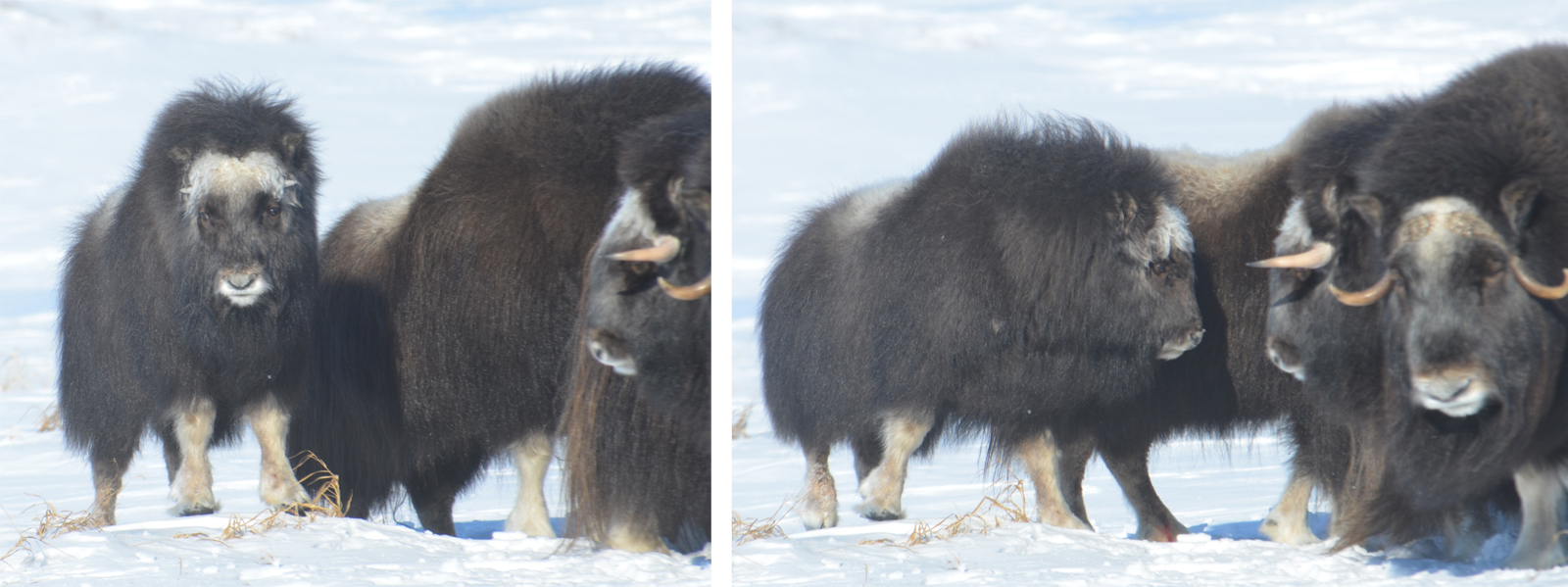
Our first morning brought an unusual event – a windless snow storm. Overnight, four inches of powder had accumulated on our front porch in Kotzebue, Alaska. In the early dawn, I could see the snow lightly falling, illuminated by the few street lights across from our Park Service bunkhouse. In a land often swept with wind, fluffy snow is a rare event. This can’t last long I thought, the wind will have to pick up soon.

Rob and Blake arrive in Shishmaref
I traveled to the arctic with good friend and project field technician Robert McGillicuddy to work for Dr. Joel Berger who was conducting two simultaneous Arctic studies of muskoxen – one on Wrangel Island Russia and the second in northwest Alaska. Our goal was to use noninvasive photogrammetry to remotely sample muskoxen in Bering Land Bridge National Preserve and Cape Krusenstern National Monument in order to estimate body size. The overarching goal here was to determine how individuals varied from different geographical regions and to better understand why. Knowing we were going to be snowmobiling 100 miles a day, I was glad to see the fresh snow piling up, and hoping it would smooth our often bumpy ride across the tundra in search of muskoxen.

Lee Harris
Using local guides (Lee Harris, Ross Schaffer, Fred Goodhope III, Fred Goodhope Jr., Fred C. Weyiouanna, Wilbur Kuzuguk, Edwin J. Weyiouanna, and Perry C. Weyiouanna) we located muskox groups in order to take photos of the front and side of each individual's face. Back in the office, measurements taken of these photos (i.e. the distance between the eyes and from the base of the horn to the nostril) are used to estimate individual body size and gauge animal condition.

Front and lateral (side) view of a young male muskox
While the snow accumulation of our first day was a welcome surprise, it was the exception rather than the rule in what was a very dry and relatively warm year in Arctic Alaska. As the climate continues to change, understanding the response of highly adapted arctic species such as muskoxen is imperative for the conservation and management of animals inhabiting northern latitudes.
Shortly after returning from the field, Blake Lowrey successfully defended his Master's thesis on mountain lions at the University of Montana. Next year he will begin a PhD at Montana State University studying bighorn sheep and mountain goats.
